Ask a Jeweler: A Beginner’s Guide to Diamonds, Part I
by Anna Rasche
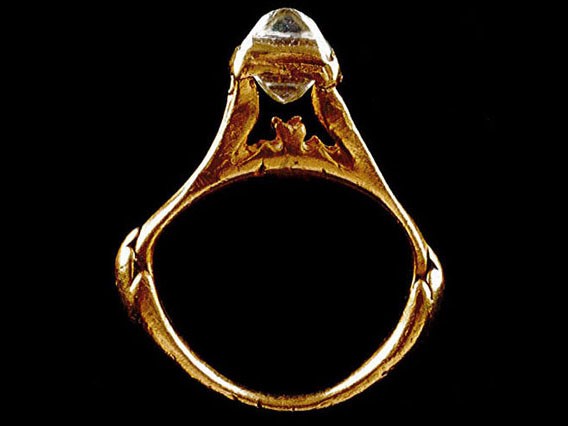
We’ve looked at pearls; now it’s time for diamonds. Let’s do this.
Birth
In the center of tectonic plates are places that remain still and stable as thinner edges of the earth’s crust stretch and swirl around them. These places are called cratons, and they extend hundreds of miles below the surface, ancient bedrock as reliable as Atlas, pushing into the dense mantle that surrounds the core. If you were a mole person, capable of tunneling about 100 miles down into one of these cratons, and you lived sometime between 1 billion and 3.3 billion years ago, you might notice that the temperature and the pressure was just right for diamonds crystals to grow.
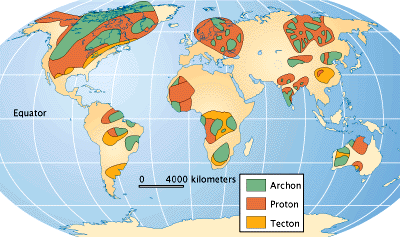
Archons, protons and techtons are the three different types of cratons.If you were a particularly brave mole person, you may have stuck around to see angry pockets of magma building up in fissures between the diamond bearing rocks. Hopefully you had already tunneled far away when the pressure got so intense that the lava forced its way upwards and burst through the earth’s surface, becoming a giant scary volcano. The eruption would have continued for sometime, the lava carrying diamonds and all sorts of other goodies from the center of the earth close to the surface. Eventually, when the pressure was relieved, the lava cooled and hardened, leaving diamonds embedded at the surface and along the depth of the volcano’s crater. The resultant rock is called a kimberlite pipe, and it’s from deposits like these that all the diamonds in the world come. Over the centuries erosion and earthquakes have deposited the stones over broad areas, but they all rode to the surface on a geyser of magma.
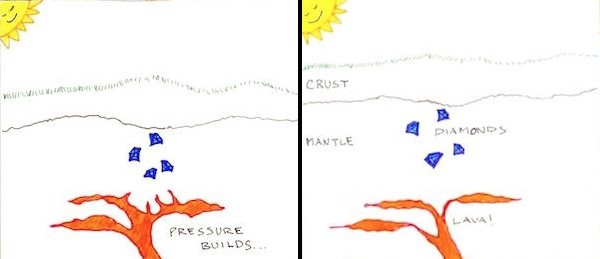
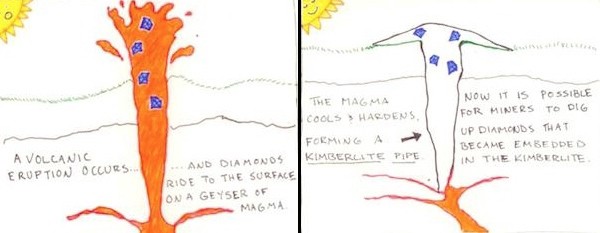
Humans, Take Note
Pure diamond is composed completely of carbon atoms, which are forced to reside in a grid-like structure due to the high pressure/temperature under which the gems form. It’s this atomic arrangement that makes diamonds one of the hardest substances known to man. In addition to being the original hard rock, diamond crystals grow in an octahedral structure that is not often found in the natural world.
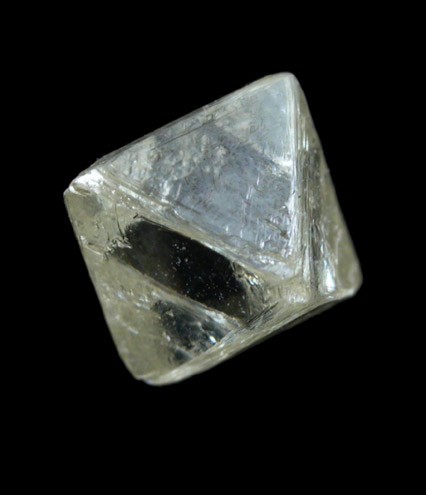
An Octohedral diamond crystal.
Because of these unique properties, diamonds have been held in special regard since ancient times. In the first century AD, Pliny wrote, “Diamond is the most valuable, not only of precious stones, but of all things in this world.” Because of its incredible hardness, it took awhile for lapidaries to figure out how to cut diamonds. The oldest surviving diamond jewelry is made to show off that neat octahedral shape of the crystal, not to maximize the gem’s potential for brilliance.
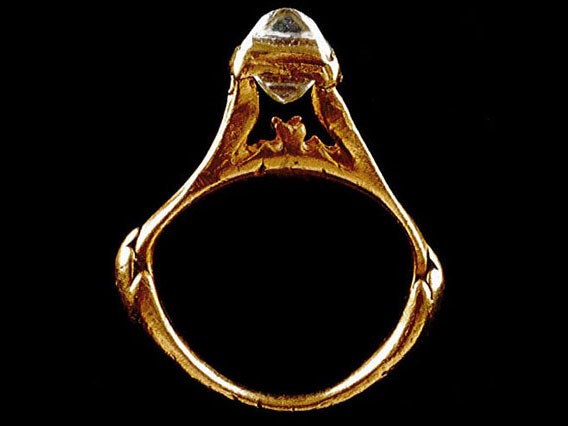
Ancient Roman ring featuring octahedral diamond crystal.
Despite this reverence, diamonds were more of a curiosity than a well-established commodity to the classical western civilizations, and it was in India where the curious crystals first achieved some real prominence, in the elite’s treasuries. Rich alluvial deposits in the Golconda region meant lucrative diamond mines and Maharajas with egg sized stones on their turbans. Indian craftsman realized that by grinding diamonds together it was possible to create elaborate faceting that brought out the fire and brilliance of the gems. By the 16th century, early versions of “rose cut” diamonds begin to appear.
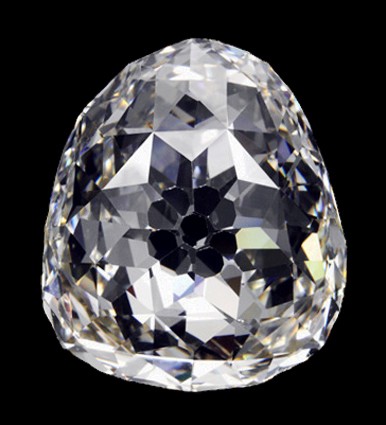
The famous Beau Sancy diamond is a 34.98ct double rose cut, and was mined centuries ago in India. It most recently sold at Sotheby’s Geneva for $9.57 million.Many of the giant, famous diamonds with long royal provenances that show up at auction every few years can trace their origins back to these Indian mines. Trade routes that opened up between east and west at the dawn of the European renaissance meant a whole new market for diamonds, and wealthy Europeans gobbled up all the Indian diamonds they could. By the 18th century, Golconda’s ancient mines were all but exhausted.
But in the year 1727 — just as the Indian mines were drying up — the Portuguese discovered an abundance of diamond bearing rock in their colony of Brazil. This discovery roughly coincided with advances in stone cutting techniques, and the invention of the old mine and old european cutting styles (precursors to today’s round brilliants). Suddenly, diamonds were widely available, and more sparkly than ever. Eighteenth century ladies covered up their daring declotage and towering wigs with elaborate diamond jewels that looked quite impressive in candlelight.
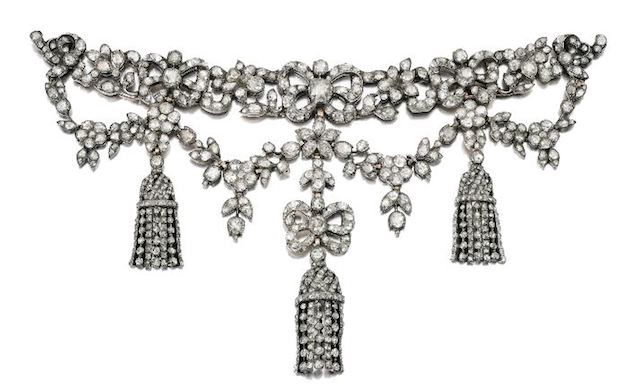
Diamond devant de corsage c.late 18th century. This stunning piece could be worn as a choker or sewn to the top of a bodice, depending on where one wanted to draw the eye. The new “brilliants” suffered a brief dip in popularity when the French revolution made aristocratic fashions a bit uncouth, but people got over that aversion quickly, and within a few decades ladies and gents regained their appreciation for diamonds. Any Victorian lady who could afford it had a piece or two (or 10) of diamond jewelry that she’d bust out on formal occasions. Queen Victoria herself amassed quite a nice collection thanks to the generously given (i.e., forcibly taken) gifts of Indian maharajas. Alas, like Golconda before it, Brazil had a finite supply of diamonds that was nearing exhaustion just when…
De Beers and the Diamond Industry
In the year 1869, an 83.5ct diamond was discovered on a South African farm belonging to the De Beers family (who sold their farm well before the famous company was named after them). Soon, young men were trekking from all over the world to stake their claim and get rich quick in the diamond trade. The nearby sleepy frontier town of Kimberley, South Africa, became a booming city of 50,000 novice prospectors.
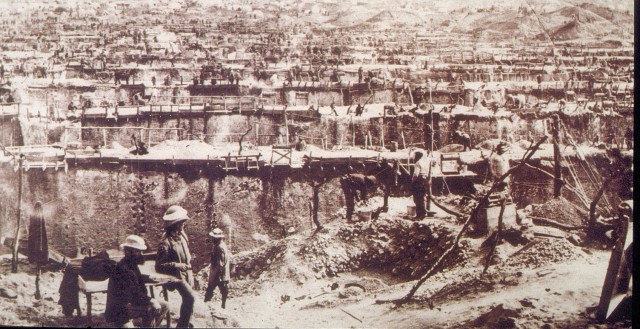
Kimberley mines, c.1872.Heaps of diamonds were shipped back to Europe and the Americas. Already a popular gemstone, this new availability marked the beginnings of the diamond’s ascent to its current status as king of engagement jewelry. Helping it along considerably was the invention of the “Tiffany Setting” in 1886. The classic six prong setting was a departure from elaborate designs that had so far dominated Victorian jewelry, and was meant to show off the size and quality of a diamond to maximum effect. It is still one of the most popular styles of engagement ring in the US today.
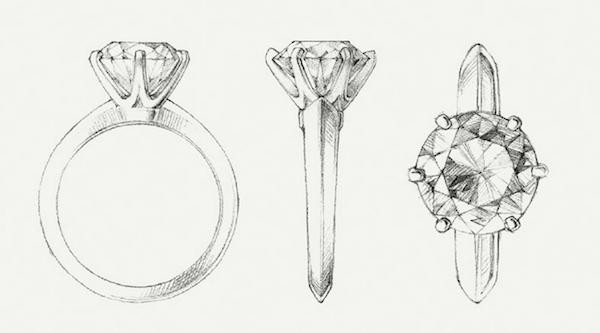
Tiffany setting diagram.Despite the ever-growing popularity of diamonds, Kimberley mining entrepreneurs quickly realized they’d stumbled across too much of a good thing. The market was unable to absorb the massive diamond supply the miners had unleashed, and prices plummeted. Lifting rocks out of holes in the hot sun is a terrible way to spend the day, and with no promise of fortune, many of these stakeholders began looking for a way out. This is where an enterprising young British “gentleman” by the name of Cecil B. Rhodes found his opportunity.

The Rhodes Colossus — 1892 political cartoon.Cecil was your classic late 19th-century imperialist. He took up the White Man’s burden with great gusto, and felt it was his privilege and duty to exploit Africa for the good of the Empire. He was to build one of the legendary fortunes of modern times in little more than a decade. (Both the Rhodes scholarship and the country of Rhodesia (now Zimbabwe) are his namesakes.)
Back in Kimberley, as small-time miners got fed up with low diamond prices, Cecil would buy their claims. Eventually, he succeeded in gaining ownership of every single mine in the Kimberley area and consolidating them into one company. Thus, in the year 1888, De Beers Consolidated Mines was born. Cecil’s solution to the oversupply problem was simple: artificially decrease the supply to artificially increase prices. De Beers would release diamonds into the market at strategic intervals, and stockpile any extras in their vaults for a later date. As the diamond boom spread through Africa, so did De Beers. Rhodes bought any diamond mine he could get his hands on. If De Beers wasn’t able to purchase a mine outright, they would purchase the entire production of that mine. In this way, at the time of Cecil’s death in 1902 — he died rather early because running a global monopoly is hard — De Beers controlled 90 percent of the world’s diamonds.
After Rhodes’ death, De Beers’ influence continued to spread under the watchful eyes of Ernest Oppenhiemer, a former mining rival who became chairman of the company in 1927. Oppenheimer took the monopoly to the next level by flooding the market with gemstones similar to those of any diamond producers attempting to operate outside of the De Beers cartel, causing the value of his competitor’s inventory to plummet.
Diamond cutting technology was making great leaps during this time as well: in 1919 a young engineer named Marcel Tolkowsky published designs for what he called “The American Standard” diamond cut, which became the basis for the ubiquitous round brilliant of today.
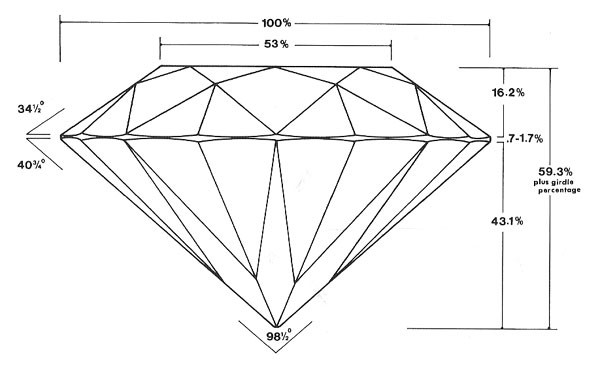
Tolkowsky’s proportions for the “ideal”diamond.De Beers now had access a new scientific, blueprint to make their diamonds extra sparkly, and control of the world’s diamond supply. But diamonds were no real buffer for the Great Depression, and sales soon began to slump.
Because De Beers owned all the diamonds, they didn’t need to promote their own company specifically; they just needed to convince people to buy diamonds in general. They focused on the United States as an excellent potential market. As farmers’ wives saw their land dry up and blow away, glamorous movie stars found themselves inundated with offers to borrow and be photographed with fabulous diamond jewelry. The fledgling celebrity gossip movement became De Beers weapon of choice for ramming diamonds down the public’s throat.
In 1947, the ethos was put into words by a Manhattan ad agency, and the infamous “A diamond is forever” slogan convinced men and women who grew up in the Depression that diamonds were a necessary accoutrement to eternal love. It was so successful that by 1949, two years after the ad campaign was launched, diamond sales in the United States had increased by 55 percent. As we all know, today in the United States diamonds remain the default choice for engagement and other “romantic occasion” jewelry.
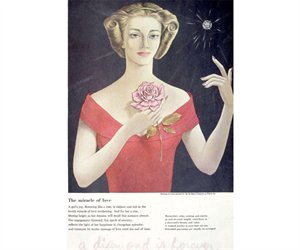
An original “A Diamond is Forever” ad, c.1947.

Keepin’ it classy in 2002.An Empire Adapts
Things chugged away like this for awhile, but it’s not easy being on top. Before long, De Beers found itself in a bit of a pickle. In the 1950s the Soviet Union found significant diamond deposits within their territory, and in the following decades Australia and Canada had similar realizations. Initially, De Beers tried their old trick of buying up all the rough, but these nations were determined to sell their diamonds outside of the cartel, undermining the carefully fixed market De Beers had worked so hard to create. Then, in the 1990s, a pesky little human rights issue known as “blood diamonds” was thrust into the limelight.
As European powers slowly relinquished control of their African colonies during the 20th century, inexperienced and underfunded governments found themselves in charge of new countries with little infrastructure and lots of ethnic strife. Warlords took advantage of the situation, and all through the continent diamond mines were seized to help fund campaigns of violence and prejudice. In 1999, when the UN and various NGOs decided to investigate the matter, they found De Beers had been carrying on with a sort of “don’t ask don’t tell” policy, buying large quantities of diamonds that clearly came from illicit mining operations.
Eager to separate themselves from this public relations disaster, De Beers agreed to quit buying rough from outside sources, and participated in the creation of the Kimberley Process. The Kimberley Process is a certification scheme that is regulated by the governments of member countries, and is supposed to prevent blood diamonds from entering the legitimate market. Basically, rough diamonds are required to be accompanied by an official document stating that they were mined by a legitimate operation before they can legally enter or leave a member country.
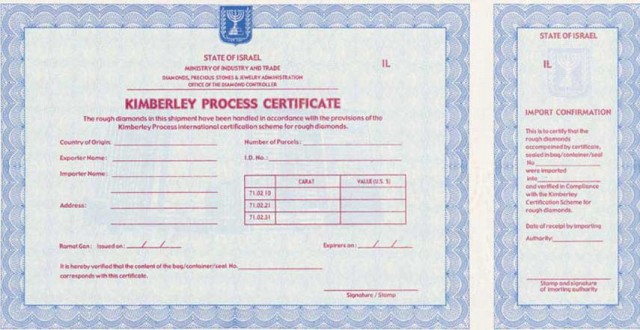
Example of Israeli Kimberly Process certificate — diamonds must be accompanied by certificates such as this to be legally imported or exported from Kimberley Process member nations.Whether these regulations are effectively enforced by member governments remains debatable, as diamond origins are notoriously difficult to determine once a stone has left the mine. Whatever the case, involvement with the Kimberly process allowed De Beers to make it through the blood diamond scandal relatively unscathed. Market pressure from Russia, Canada and Australia, however, did not alleviate and De Beers no longer attempts to control the rough diamond supply. Instead, they have focused on rebranding themselves as a luxury goods company. Today, De Beers only controls about 45 percent of the world’s rough diamonds. Poor Cecil Rhodes.
Part 2: A Buyer’s Guide to Diamonds, coming soon.
Previously: A Beginner’s Guide to Pearls
Anna tracks down antique jewels for Gray & Davis by day, and helps run The Society for the Advancement of Social Studies by night. Ask her anything.